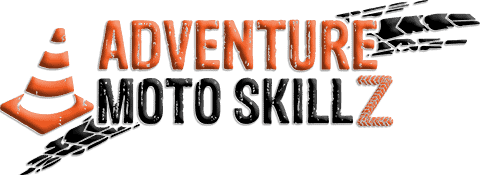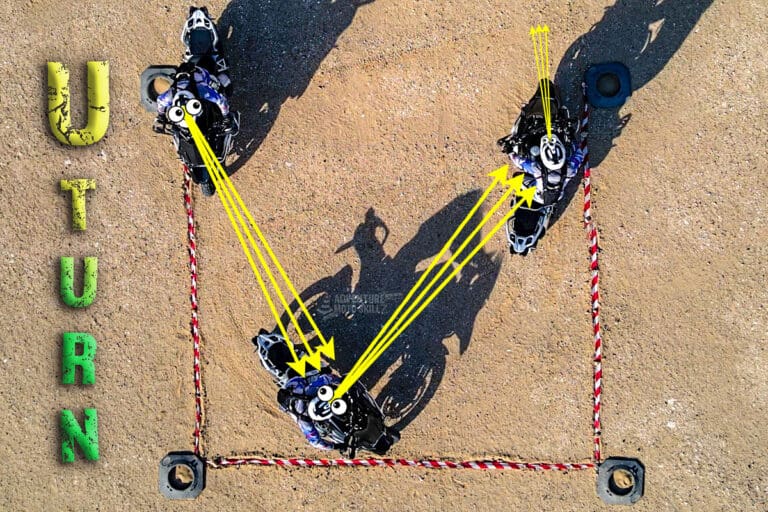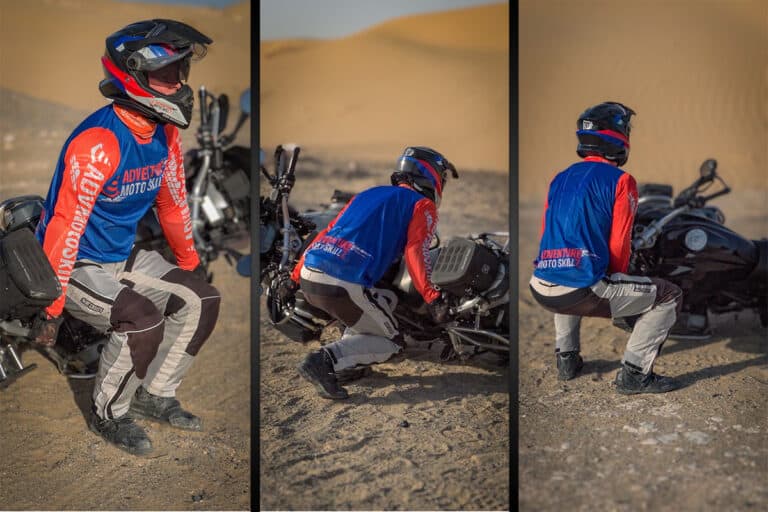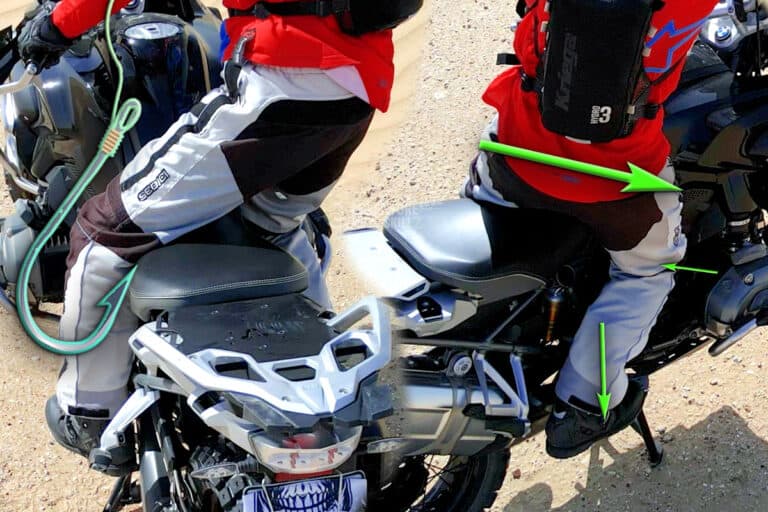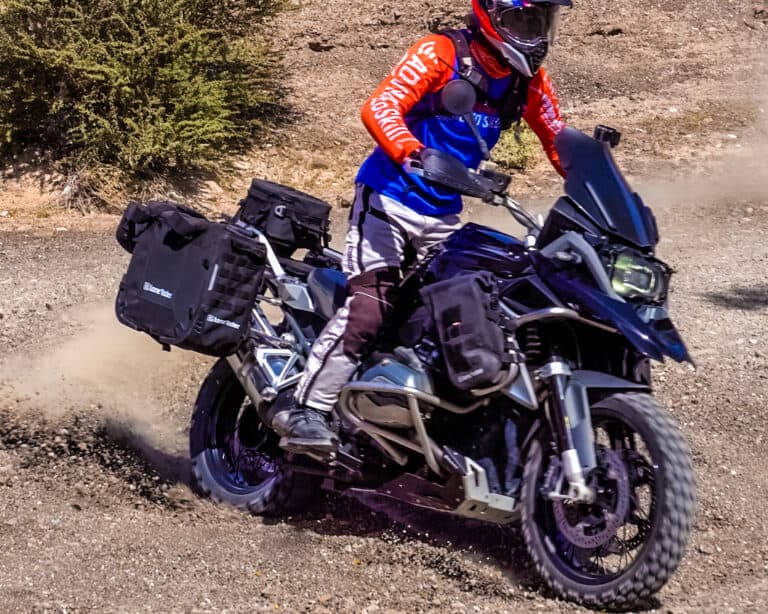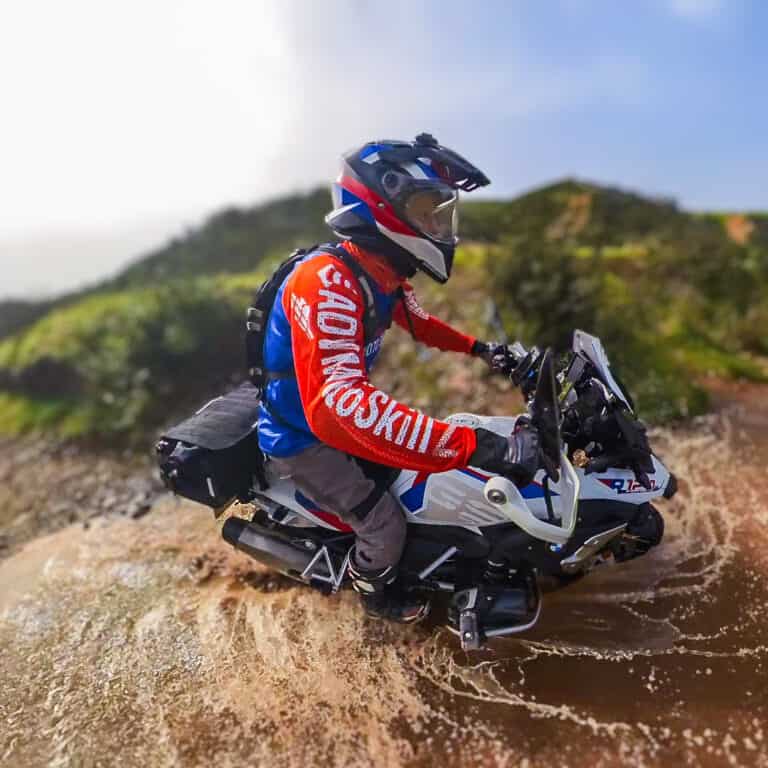Line Selection Tips for Off-Road Motorcycle Riding
One of the most important aspects of motorcycle riding, whether on or off-road, is line selection. Simply put, this is the process of choosing the safest and most efficient path through an obstacle or terrain. This is especially important when riding off-road, as there are typically more obstacles and rougher terrain to navigate.
Line selection on an off-road motorcycle is not just about picking the fastest path down the trail. It is about choosing the line that will provide the best traction potential and safest turning opportunities while setting you up for success on the next leg of your journey.
This post may contain Affiliate Links. Please see our Privacy & Disclosure Policy for more details.
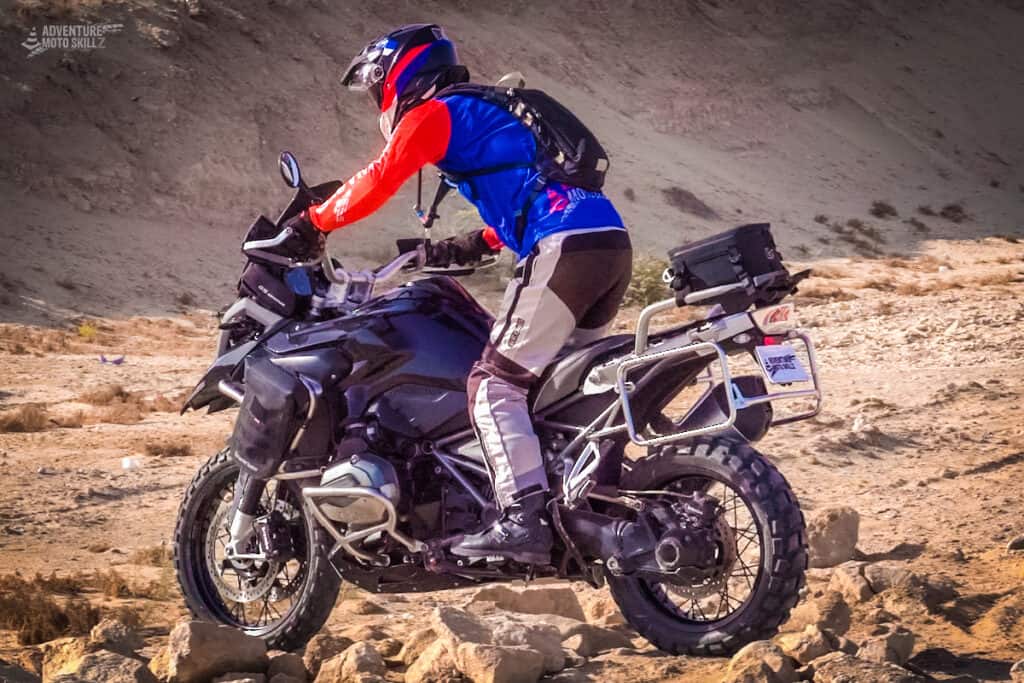
Riding your ADV bike over terrain with little traction or with numerous obstacles can often result in the bike getting stuck or tipping over. This can all be minimized by looking further into the distance and planning your best line of travel. In this blog post, we will discuss some tips for selecting the right line while riding motorcycles off-road.

Top-quality gear for your next adventure
Used and recommended by ADVMotoSkillZ
Defining line selection for off-road ADV motorcycle riders
The term “line” is common to many sports in reference to a path of travel. A football player will “run a line” to evade the defense of the opposing team. Skiers or snowboards will look down the slope for the fastest and safest “line to carve”. For motorcycle riders, the term “line” is used to describe the path that the bike did or will travel over.
Line selection is the active process of looking, analyzing, and selecting your preferred avenue of passage. A direct line from where you are to where you want to go will theoretically be the fastest path. However, your analysis of the terrain that lays ahead of you, may tell a different story. If the riding area is new to you, walk the section first to better formulate your line plan.
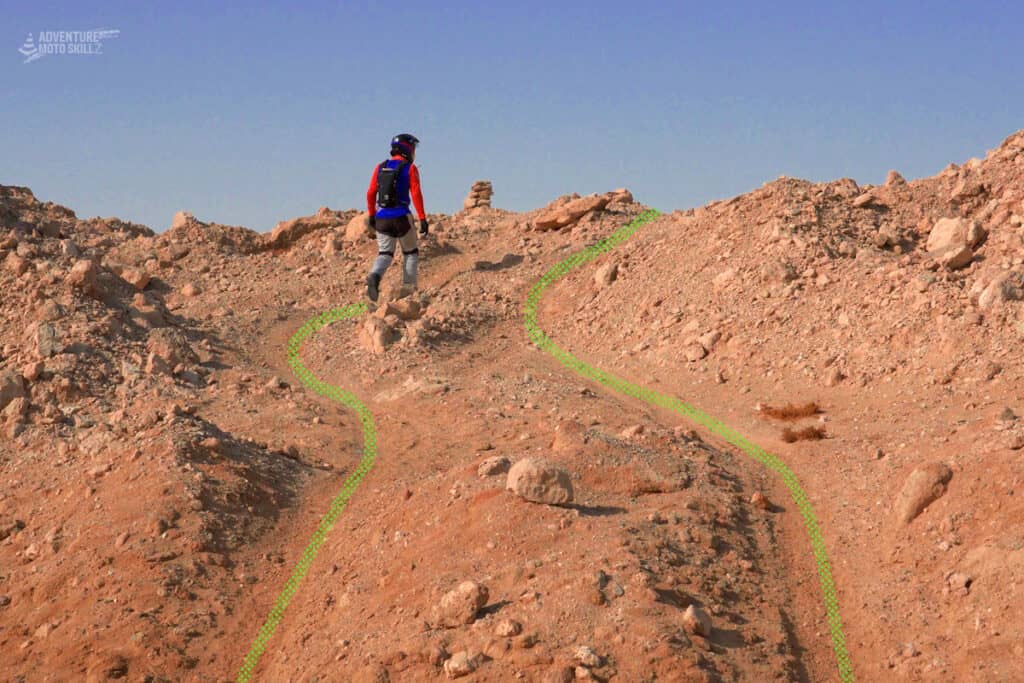
Imagine riding down a beautiful dirt road on your adventure bike. It is a clear day and you are able to see far into the distance in the direction you want to go. As you scan and analyze the road ahead, you see that a recent rain storm left some downed tree branches on the road along with some areas of residual flooding.
Given this scenario, you have a choice to make. Do you pick the most direct line even though it means riding over the branches and riding through the standing water? Or… Do you pick a line that takes you around the branches and off to the outer edge to avoid the water? Neither line selection is right or wrong! What matters is that you looked ahead, analyzed the environment, and chose the line of travel that best matched your intentions for your ride.
Line Selection sets you up for success
Keeping traction on low traction terrain
On-road riding has the advantage of providing a consistent high-traction surface for our tires, but we still need to be actively scanning the asphalt surface for the occasional oil spill or loose gravel on the roadside that may need to be avoided. This process of on-road line selection tends to focus on hazard avoidance and finding the fastest path.
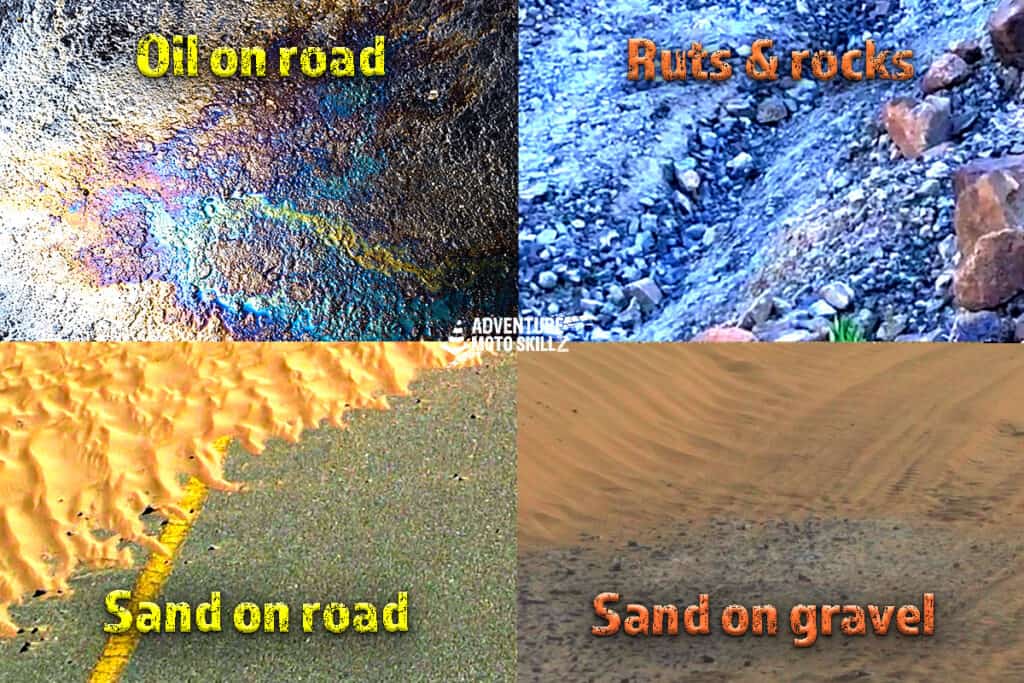
In contrast, off-road riding is a constant ebb and flow of low to medium traction. Learning how to scan the environment via “active line selection”, we can identify and target areas with the best traction potential to accelerate on, and identify the lower traction sections that we may prefer just rolling through.
ADV bike line selection through off-road corners
Selecting the best line through corners is an evolving process as you progress towards, through, and out of the corner. You can only plan a line for as far as you can see, so this involves constantly looking and scanning the terrain while making small course corrections on the fly. Respect the fact that there may be an unexpected hazard on the other side of the corner and chose a corner entry line that provides you with the most options as you complete the corner.
If you are new to riding on dirt roads, I recommend an abundance of care until you have developed a good feel for how much traction you have on a particular stretch of road (as discussed above). You do not want to try to hit every corner apex like you would on asphalt. By leaving a little extra space and staying slightly above the apex, we create the opportunity to maneuver with more confidence if there is an unexpected tire slide.
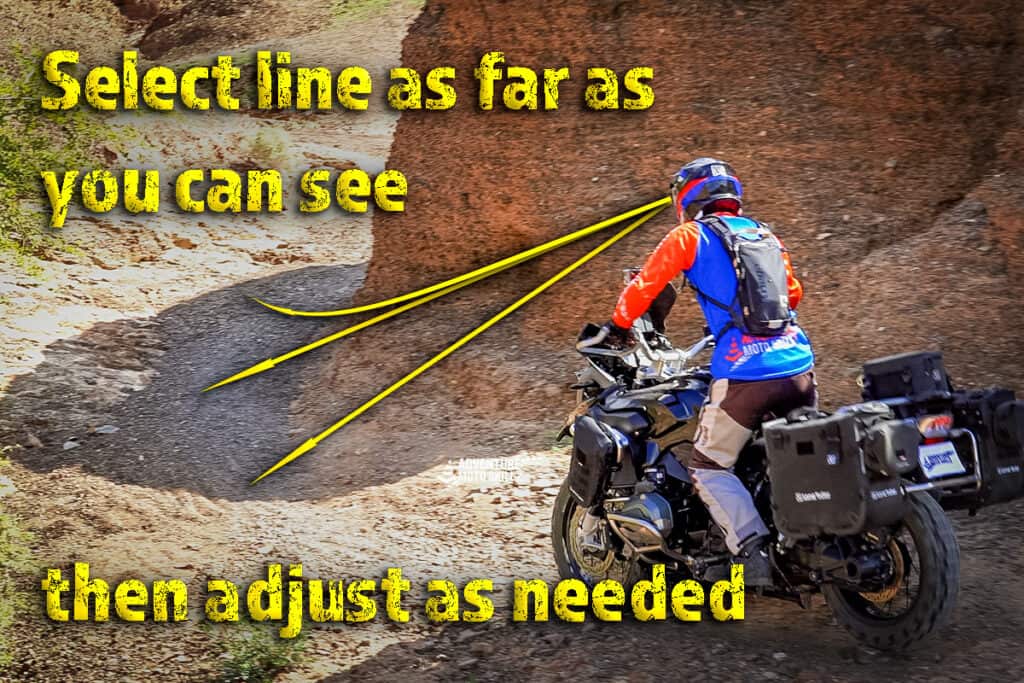
When riding on- or off-road, choose a line around the corner that favors whatever side of the road is legal in that region. If there are other off-road trail riders coming from the opposite direction, you are safest to enter the corner on the legally accepted side. Once you can see through the corner and ensure no other riders are in your path, then you can relax and have your pick of lines.
If you are riding more of a single-track trail, you can sometimes be lulled into following the well-worn path that has been laid down by previous riders. Sometimes this path will have you making extra turns when there is actually a more straightforward route that requires fewer steering inputs. This more straightforward line might have you ride directly over some obstacles, but often times that can be safer than trying to navigate around them.
Cornering is where it really pays to have your fundamental standing riding postures dialed in. Being comfortable standing on the foot pegs with the lower legs holding the narrow part of the bike for stability is the foundation. Having a loose, yet controlled, grip on the handlebars will allow the front end to move around as needed while being active with your balance/counterbalance techniques.
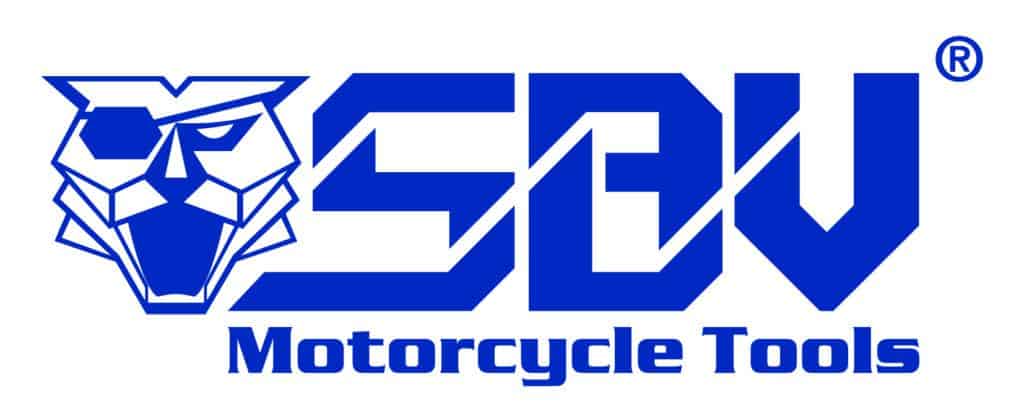
Innovative Motorcycle Tool Sets – Compact & Reliable
Used and recommended by ADVMotoSkillZ
Master off-road hill climbs & descents with the best line of bike travel
Much like cornering, hills provide some blind spots that we need to prepare for, especially if you can not see over the crest at the top. Scanning the hill for areas where the surface is free of loose rocks will often provide the best traction for the rear tire to keep grip as you accelerate up the hill.
Keeping a straight line on steep hill climbs and descents is typically the best route. If the front end gets knocked offline, your lower leg grip on the bike can allow you to quickly squeeze and counterbalance the bike as needed to maintain balance and ride in the new direction.
However, if you want to inspect the backside of the hill before committing to going down it, then choose a line at a slight angle allowing you to ride along the crest and have a gaze over it to determine if you will continue on or turn back down the same side.
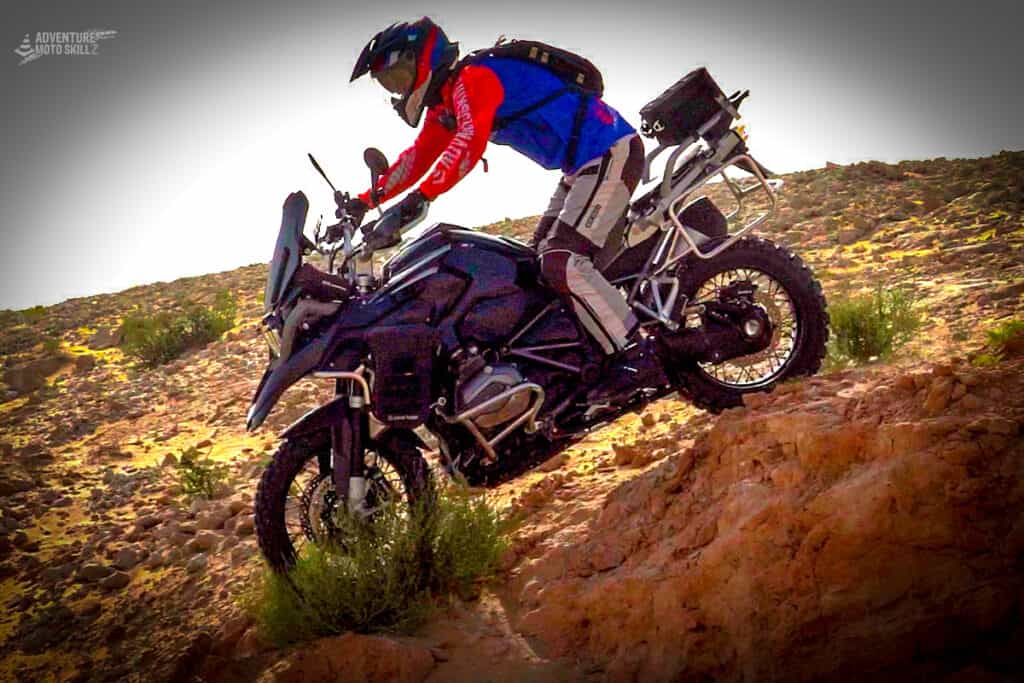
When riding downhill, learn when to let the bike roll over the loose surface sections and when braking on the higher traction sections can help keep the bike under control. Typically on a long descent, you are stringing several of these loose & firm sections together one after another.
Line selection in sand
Learning how to choose the best line to ride in sand will be addressed in this own post. As a general rule, it is advisable to avoid sand tracks that have high traffic use, whether it be cars, quads, or motorcycles. Sand that has been driven over frequently will be very soft due to it being kicked up into the air and then resettling. This soft sand has a tendency to sink the bike and makes it difficult to keep the front wheel straight as you ride.
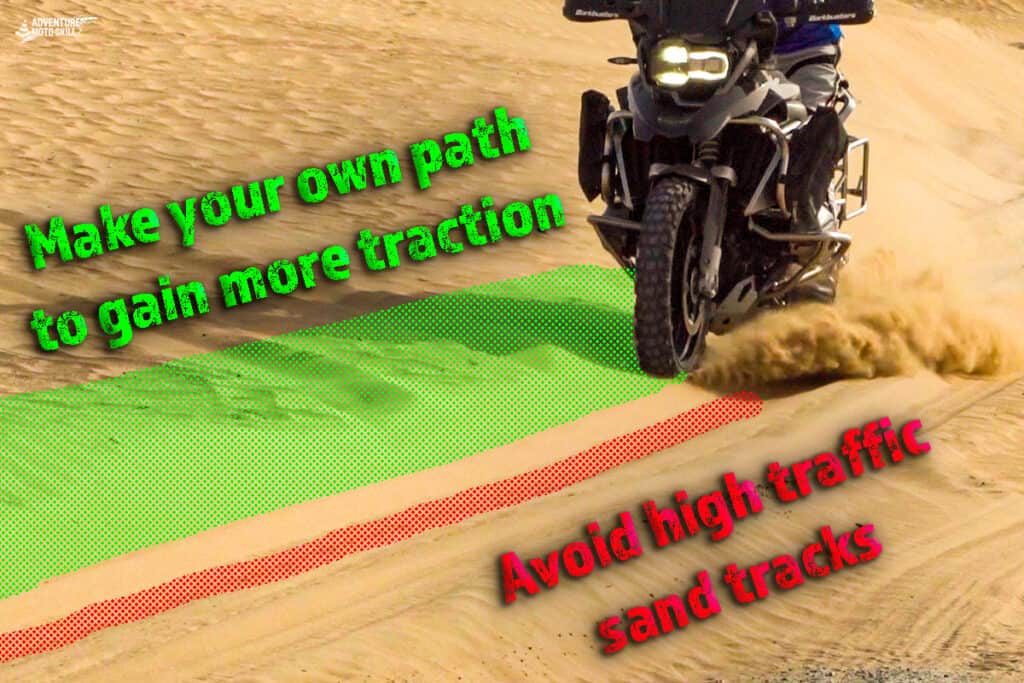
Oftentimes, the easiest line to ride in these sections like is adjacent to the sand trail. Look for sand that has not been previously ridden on, as it will be more packed down and give the bike better support.
If you enjoy riding sand, be sure to check out our post on Sand Riding and Throttle Use here after you finish this article.
Final thoughts on line selection
As a new rider, I remember being challenged with this whole process off-road. I was still developing my balance skills on the bike and learning how to properly engage the friction zone to control the amount of drive needed at the rear wheel in technical sections.
By first focusing on the basics of balance, body positioning, and smooth shifting, I created a solid foundation to then focus on how to choose the best line to ride. Being able to look further and further ahead on a trail or out in the dunes, will allow you to be proactive in planning a route to work your way there, as opposed to not seeing an obstacle until it is right in front of you and then having to react to it.
Learning to read the environment you are riding in and selecting the best line takes time to develop. Riding a line that is smoother and less challenging to you and the bike’s suspension can allow for a safer ride. Any rider who has not developed the skill to scan ahead to be aware of the hazards/obstacles in the distance can be at a higher risk of getting stuck or falling because they are constantly reacting to the immediate challenge. This reactionary riding can become physically tiring on the rider and further contribute to mistakes. As your skill level improves, you can have fun selecting a line that is more challenging than you would have been willing to try in the past.
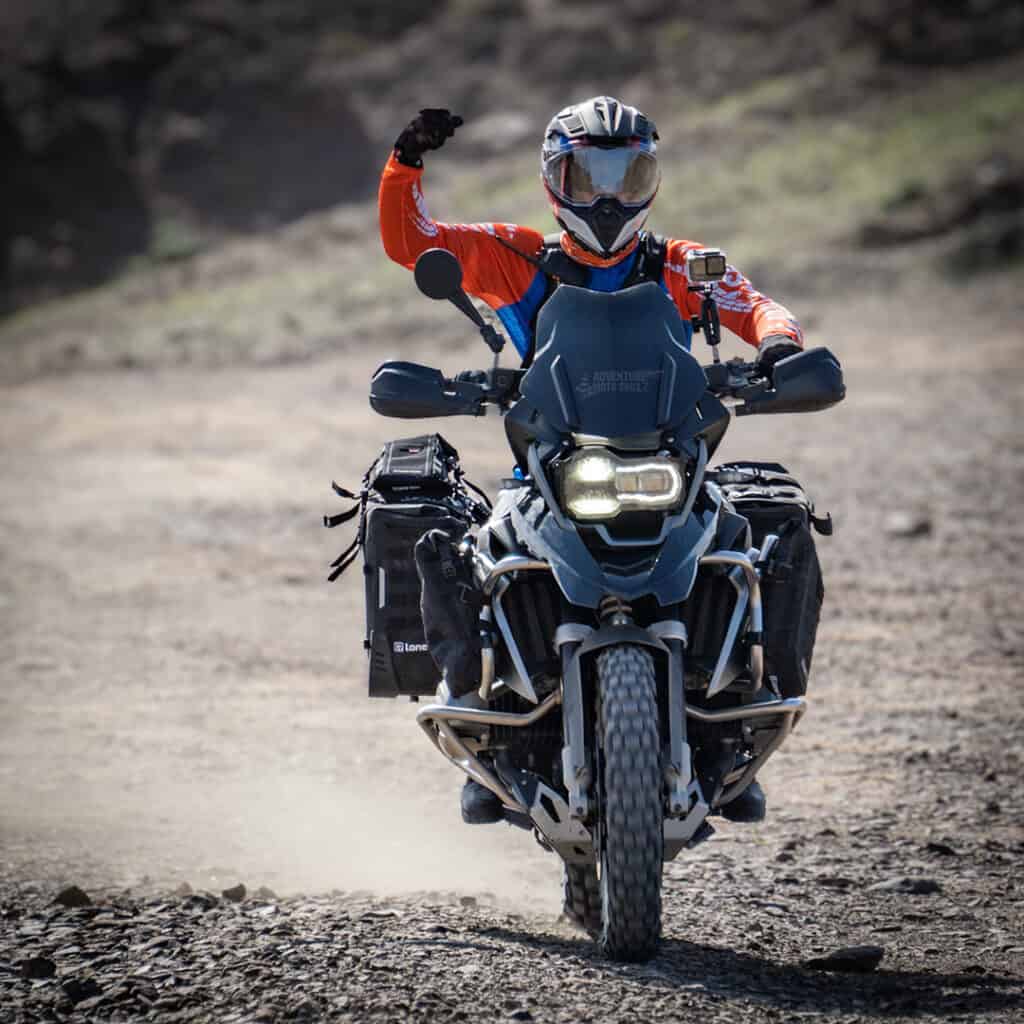
About the Author
Coach Mike is a Certified Off-Road Motorcycle Instructor & founder of ADVMotoSkillZ.
Riding tips from ADVMotoSkillZ reach thousands of international riders daily through social & blogs.
Click here to learn more about Mike’s motorcycle evolution from a Harley road rider to finding his true passion for off-road riding on a BMW 1200 GS.
If you would like to send Mike a quick message or invite him to provide training at your local facility, then visit the contact page here.
